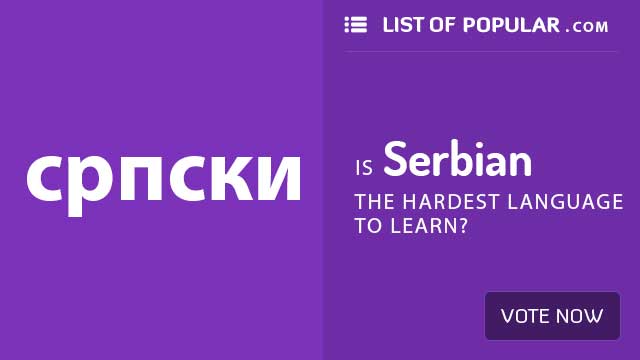Is Serbian the hardest language to learn?
"Is Serbian the hardest language to learn?" This question often provokes curiosity and debate among language enthusiasts and learners, as Serbian, with its unique grammar, diverse dialects, and Cyrillic script, presents notable challenges for non-native speakers. However, determining whether it is the absolute hardest language to learn requires a nuanced examination of its distinctive features and contextual factors.
One of the initial hurdles for learners of Serbian is its grammar. The language features a complex system of noun declensions, verb conjugations, and grammatical cases, with seven cases determining the function of nouns and adjectives in a sentence. Additionally, Serbian verbs conjugate for tense, aspect, mood, and person, adding layers of complexity to language acquisition.
Moreover, Serbian phonology poses challenges for non-native speakers, particularly in terms of pronunciation and stress patterns. The language features a variety of vowel and consonant sounds, including some that may be unfamiliar to speakers of other languages. Additionally, Serbian stress is unpredictable and can vary depending on word forms and sentence structure, requiring careful attention and practice to master.
Furthermore, Serbian is written using both the Latin and Cyrillic scripts, with each script having its own set of characters and orthographic conventions. While the Latin script may be more familiar to learners accustomed to Western writing systems, mastering the Cyrillic script is essential for reading and writing in Serbian.
Despite these challenges, labeling Serbian as the hardest language to learn overlooks the subjective nature of language acquisition. Factors such as linguistic background, exposure to the language, motivation, and learning strategies play a significant role in determining the difficulty of learning Serbian.
For example, speakers of other Slavic languages may find certain aspects of Serbian grammar and vocabulary more intuitive compared to speakers of non-Slavic languages. Similarly, learners immersed in Serbian-speaking environments or with access to quality language resources may overcome obstacles more readily than those without such advantages.
Furthermore, other languages boast their own unique challenges that rival or surpass those of Serbian. Languages like Arabic with its intricate morphology and writing system, Mandarin Chinese with its tonal nature and logographic script, or Hungarian with its complex grammar and vocabulary are often cited as equally or more challenging for learners.
In conclusion, while Serbian presents significant hurdles for learners, labeling it as the hardest language to learn requires careful consideration of various factors. Ultimately, the difficulty of learning a language is subjective and varies from person to person. Embracing the journey of language learning as a rewarding and enriching experience can empower learners to overcome challenges and achieve proficiency in Serbian or any other language they choose to pursue.

